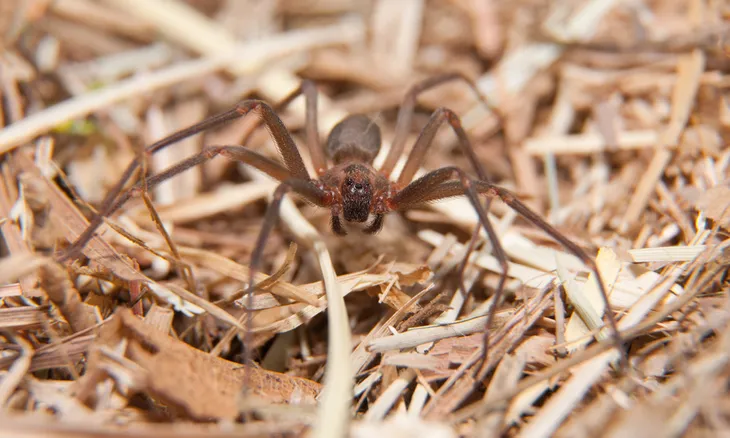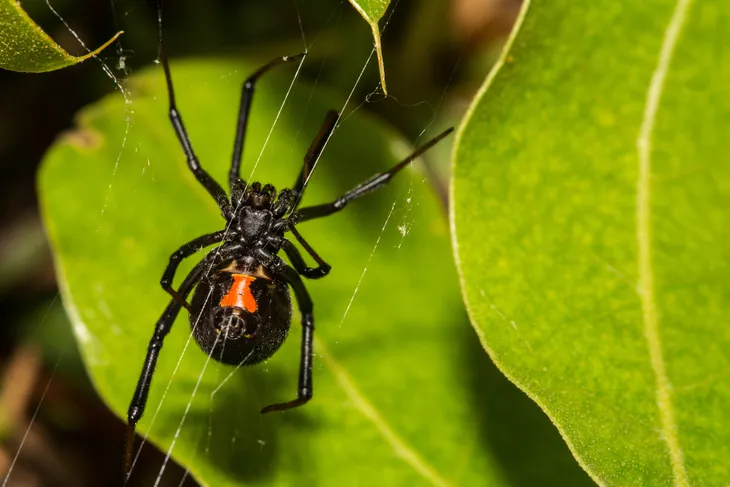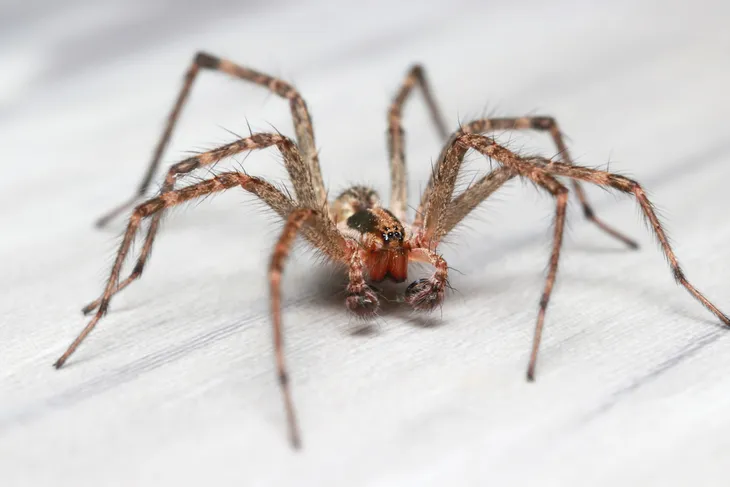- Identifying bug bites can be tricky, especially if you didn’t see what bit you. However, spider bites often look like red, inflamed bumps on your skin.
- Many spider bites are mild and can heal on their own but some may require immediate medical attention.
- Brushing up on which spiders are prevalent in your area is a great way to protect your health.
Contrary to what some people believe, spiders are not insects. They’re arachnids and belong in the same class as mites, scorpions, and ticks. There are over 3,000 species of spiders in the U.S. and about 45,000 worldwide. Many spiders are harmless to humans but there are a few species that can put your health at risk.
If you’ve been bitten by a spider, it’s important to know which harmful spiders are in your area and know the signs of a harmful bite. Some spider bites can heal on their own while others are a medical emergency. Here’s what you need to know about spider bites, including the different types and signs. We’ll also look into treatment options and how to prevent spider bites in the first place.
How to Identify a Spider Bite
Identifying bug bites can be tricky, especially if you didn’t see what bit you. However, spider bites often look like red, inflamed bumps on your skin. The Mayo Clinic says they can also be itchy or painful. Sometimes, the bite may even go unnoticed.
On the other hand, some spiders can cause more serious signs and symptoms, such as muscle pain and cramping, nausea and vomiting, fever, headache, chills, anxiety, rashes, and high blood pressure. Let’s take a look at the different types of spiders that may cause adverse reactions in humans.
Brown Recluse Spider
Brown recluse spiders, also known as fiddle back or violins spiders, are small brown spiders that have a dark mark on their head. According to Healthline, they’re about 1-inch long and are usually nonaggressive. In fact, they usually only bite if they’re trapped against your skin.
The Cleveland Clinic says brown recluse spiders thrive in dry, sheltered areas. They can also be found indoors. So be on the lookout for these spiders in piles of wood, leaves, and rocks, as well as in dark closets, attics, and shoes. These spiders do live in America and are known to be found in:
- Eastern texas
- Arkansas
- Kansas
- Tennessee
- Missouri
- Oklahoma
- Louisiana
Signs of a Brown Recluse Spider Bite
A brown recluse spider can cause a very serious bite. According to Healthline, the bite can blister and become increasingly worse if left untreated. It may destroy surrounding tissue and cause other uncomfortable symptoms like fever, chills, and headache. Although rare, in severe cases the bite may cause blood in urine, jaundice (yellowing of the skin and whites of the eyes), kidney failure, seizures, or a coma.
The source says a brown recluse spider bite can be painless at first but it usually starts to itch, hurt, and turn red within 8-hours. A telltale sign is a red or purple ring around the bite (it should look like a target or bull’s-eye).
Unfortunately, there is no medicine to counteract the bite but your doctor may prescribe antibiotics. It’s also important to keep the bite clean with soap and water to encourage healing. In severe cases, you may need surgery or hospitalization. If you think you’ve been bitten by a brown recluse spider, contact your doctor.
 Prostock-studio / Shutterstock
Prostock-studio / ShutterstockBlack Widow Spider
Another spider you’ll want to be on the lookout for is a black widow spider. Black widows have a distinct appearance. They have a shiny black body with a red hourglass shape on their bellies. According to the Cleveland Clinic, the black widow spider is mostly found in the Western and Southern United States and thrives in secluded spaces, such as woodpiles, building overhangs, piles of leaves, and boxes in the attic.
It’s worth noting, only adult female black widows are toxic to humans. So how can you tell the males and the females apart? Orkin Canada explains that the females have the distinct red hourglass marking on their bellies while the male black widows have yellow, red, and white bands and spots over their backs.
Signs of a Black Widow Bite
Black widows aren’t aggressive but they will bite if they feel threatened. Orkin Canada explains their venom is a neurotoxin that affects the nervous system. Common symptoms of a black widow bite include:
- abdominal and chest pain
- difficulty breathing
- nausea
- chills
- swelling
- sweating
- weakness
- fever
Sometimes a black widow bite can feel like a small prick, but other times you won’t feel anything at all. That said, your skin will react immediately and you’ll be able to see the puncture marks. If you think you’ve been bitten by a black widow spider, seek medical attention immediately. Taking swift action is especially important for children and seniors.
Hobo Spider
The hobo spider is a brown spider with a gray herringbone pattern on its belly. The Cleveland Clinic says they thrive in dark, moist environments, such as basements, crawl spaces, window wells, and woodpiles.
These spiders are common in the Pacific Northwest. Like most spiders, the hobo spider is not aggressive unless it’s provoked. They have long legs and can run fast.
Signs of a Hobo Spider Bite
Symptoms can develop within 15-minutes after the bite. You’ll likely experience pain and numbness at first. Healthline says after an hour, the bite will turn red, and then it’ll become hardened and swollen within 8-hours. The source also notes that after 24-hours, the bite will likely start discharging fluids and it may even turn black.
Other signs of a hobo spider bite include weakness, joint pain, headaches, nausea, and sweating. If you think you’ve been bitten by a hobo spider, seek medical attention immediately. Treatment is important within the first 24-hours and may involve medication or surgery.
Tarantula
Tarantulas are prevalent in the Southwestern states of America. They thrive in desert climates, however, Healthline says they can also be found “as far east as the Mississippi River.” They’re burrowing spiders and like to live underground in burrows but they also like to hide under stones or logs.
Tarantulas have a distinct appearance with their hairy texture and visible fangs. They can be black, brown, gray, and sometimes brightly colored. They’re quite large too, about 3- to 5-inches long.
Signs of a Tarantula Bite
The truth is, tarantulas are fairly timid and they prefer to hide rather than bite. That said, they may bite if they feel threatened. Healthline also points out that the venom from the tarantula species found in the U.S. isn’t considered dangerous, however, it will feel like a bee sting.
Other potential signs of a tarantula bite include a rash, swelling, and itching. In severe cases, a rapid heart rate, difficulty breathing, and low blood pressure are also possible. If you develop these symptoms, get medical care right away.
Other Spiders That Can Harm Humans
Even though there are over 40,000 known species of spiders in the world, less than 30 of them can pose a serious threat to humans. The Encyclopedia Britannica outlines some of the most toxic spiders from around the world you should be aware of, including:
- The Brazilian wandering spider is native to Central and South America and is considered one of the most venomous spiders in the world.
- Wolf spiders are found worldwide and prefer habitats like grasslands, fields, beaches, gardens, and marshes. While their venom isn’t very dangerous, their bite can cause redness, swelling, pain, and swollen lymph nodes.
- Yellow sac spiders are found throughout the U.S. and in Mexico. Their venom is cytotoxic, which can destroy a cell or impair its function.
- Redback spiders are a cousin to the black widow and are native to Australia. They can also be found in New Zealand, Belgium, and Japan. Female spiders can be aggressive when defending their eggs. Their venom can cause pain, sweating, rapid heartbeat, and swollen lymph nodes.
- Funnel web spiders are a family of spiders that are named for their funnel-shaped webs. They can be found in North America and South America, and the poisonous species are found in Australia. Their bite can be fatal and requires an antidote. In fact, several human fatalities have been recorded in Sydney since the 1920s.
How to Treat a Spider Bite
Though spider bites can be uncomfortable, and sometimes painful, they’re often mild and heal on their own within a week. However, the Mayo Clinic says it is important to clean the wound with mild soap and water and apply an antibiotic ointment three times daily to help prevent infection.
If the bite is painful, you can apply a cool compress to the affected area for 15-minutes several times a day. The source also notes elevating the affected area and over-the-counter pain relievers may be helpful too.
When to Seek Medical Attention
It’s important to keep an eye on the bite and monitor your symptoms, especially if you didn’t see what bit you. If the bite becomes infected or develops into an open wound, you should seek medical attention.
You should also seek medical care if you develop any of the symptoms we mentioned above, especially difficulty breathing — this is a medical emergency. The Mayo Clinic also notes that if your immunization is not up-to-date, your doctor may recommend a tetanus shot after a spider bite.
How to Prevent Spider Bites
Most spiders aren’t aggressive and only bite when they feel threatened. But there are steps you can take to help prevent spider bites. Getting informed is a great place to start. Find out which spiders are common in your area, as well as what they look like and their preferred habitats.
The Mayo Clinic says when venturing outdoors and cleaning garden beds, sheds, basements, and attics, be sure to wear insect repellent and protective clothing like long-sleeved shirts, long pants tucked into socks, gloves, and boots. It’s also a good idea to shake out gloves, boots, and clothing before putting them on. You can also prevent spiders in the home by installing screens on windows and doors, sealing cracks, and removing spiders and spiderwebs.
It’s also a good idea to remove piles of rocks or wood, especially close to your home. Finally, the source notes if you find a spider on you, “flick it off with your finger rather than crushing it against your skin.”















